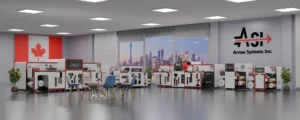Table of Contents
Different Types of Label Materials
There are several types of Materials that can be used for printing labels, including paper, polyester, vinyl, polypropylene, BOPP, and tag stock. Each of these materials has its own unique properties and characteristics, which make them suitable for different applications. In this blog post, we’ll take a closer look at the differences between these materials and discuss which ones are best for which applications.
Paper
Paper is a traditional material that has been used for printing labels for centuries. It is made from wood pulp and is available in a variety of weights and finishes. Paper labels are inexpensive to produce and are suitable for a wide range of applications. They can be printed using a variety of printing methods, including offset printing, digital printing, and screen printing. Paper labels are also easy to write on and can be easily removed or repositioned. However, paper labels are not as durable as some of the other materials on this list, and they are prone to tearing, fading, and smudging.
Polyester
Polyester is a synthetic material that is made from polyethylene terephthalate (PET). It is a strong and durable material that is resistant to moisture, tears, and chemicals. Polyester labels are ideal for applications where the Label needs to withstand harsh conditions or repeated handling. They are also suitable for outdoor use, as they are resistant to UV light and do not fade or discolor over time. Polyester labels are more expensive to produce than paper labels, but they offer superior performance in terms of durability and longevity. They can be printed using digital printing, screen printing, or hot stamping.
Vinyl
Vinyl is another synthetic material that is commonly used for printing labels. It is made from polyvinyl chloride (PVC) and is known for its flexibility and durability. Vinyl labels are resistant to moisture, tears, and chemicals, and they are suitable for both indoor and outdoor use. They are also resistant to UV light and do not fade or discolor over time. Vinyl labels can be printed using a variety of printing methods, including digital printing, screen printing, and hot stamping. They are more expensive to produce than paper labels, but they offer superior performance in terms of durability and longevity.
Polypropylene
Polypropylene is a synthetic material that is made from polypropylene polymer. It is a lightweight and flexible material that is resistant to moisture, tears, and chemicals. Polypropylene labels are suitable for indoor and outdoor use, and they are resistant to UV light and do not fade or discolor over time. They are more expensive to produce than paper labels, but they offer superior performance in terms of durability and longevity. Polypropylene labels can be printed using digital printing, screen printing, or hot stamping.
BOPP (Biaxially Oriented Polypropylene)
BOPP (Biaxially Oriented Polypropylene) is a synthetic material that is made from polypropylene polymer. It is a strong and durable material that is resistant to moisture, tears, and chemicals. BOPP labels are suitable for indoor and outdoor use, and they are resistant to UV light and do not fade or discolor over time. They are more expensive to produce than paper labels, but they offer superior performance in terms of durability and longevity. BOPP labels can be printed using digital printing, screen printing, or hot stamping.
Tag stock
Tag stock is a heavy-duty paper material that is commonly used for printing labels. It is made from a variety of materials, including cardstock, kraft paper, and Tyvek. Tag stock labels are suitable for applications where the label needs to withstand harsh conditions or repeated handling. They are also suitable for outdoor use, as they are resistant to moisture and UV light. Tag stock labels can be printed using a variety of printing methods, including offset printing,
Explore Our Memjet Duraflex Solutions here
Trending Post
Recent Blog Post

Breaking News: Arrow Systems Partners with BUSINESSWARE to Transform Digital Printing Across Greece & Cyprus

Sid Sistemas de Impresión in Spain Installs ArrowJet Aqua 330R and DPR Taurus to Bolster Label Production

